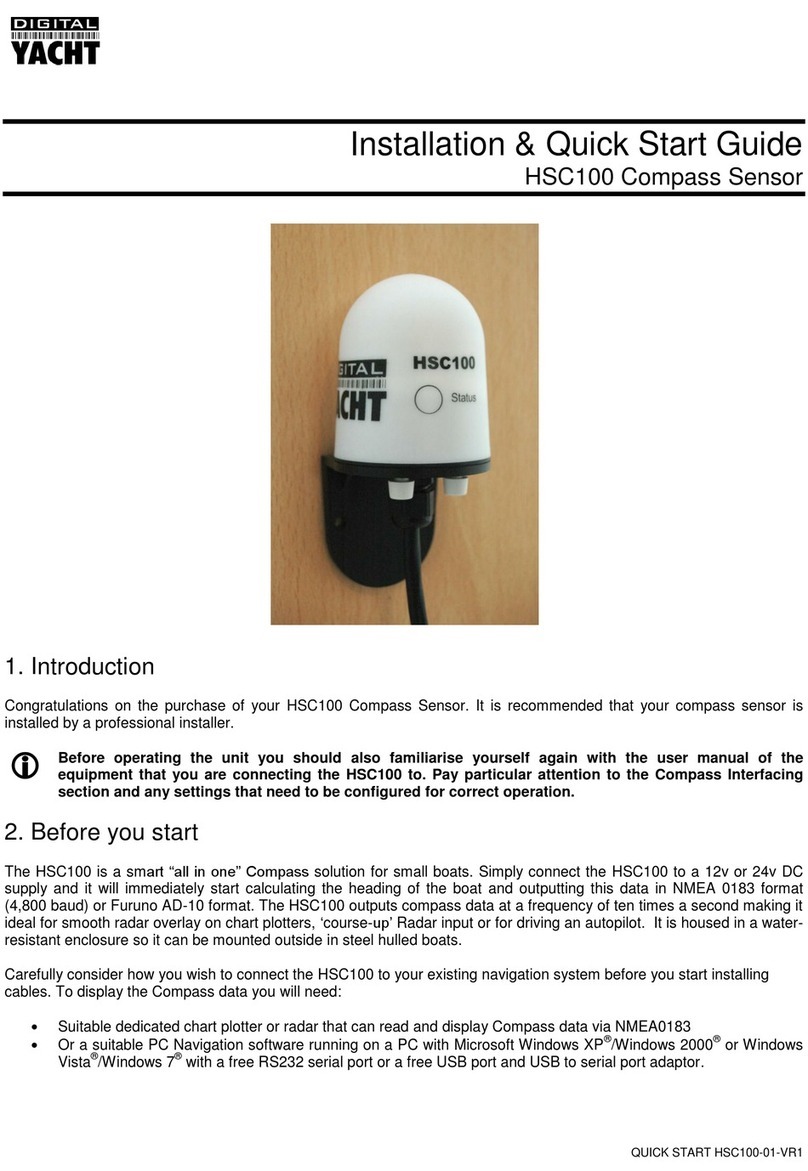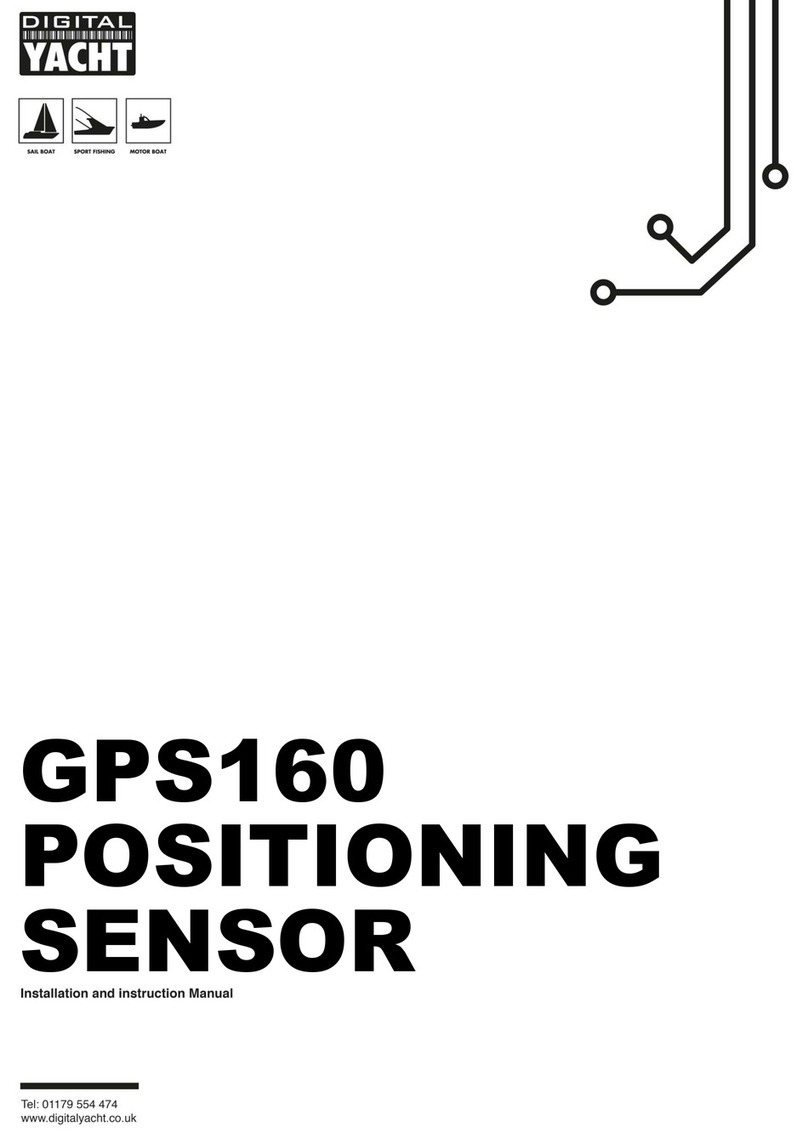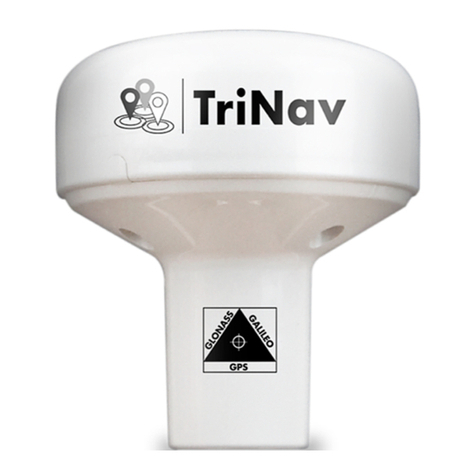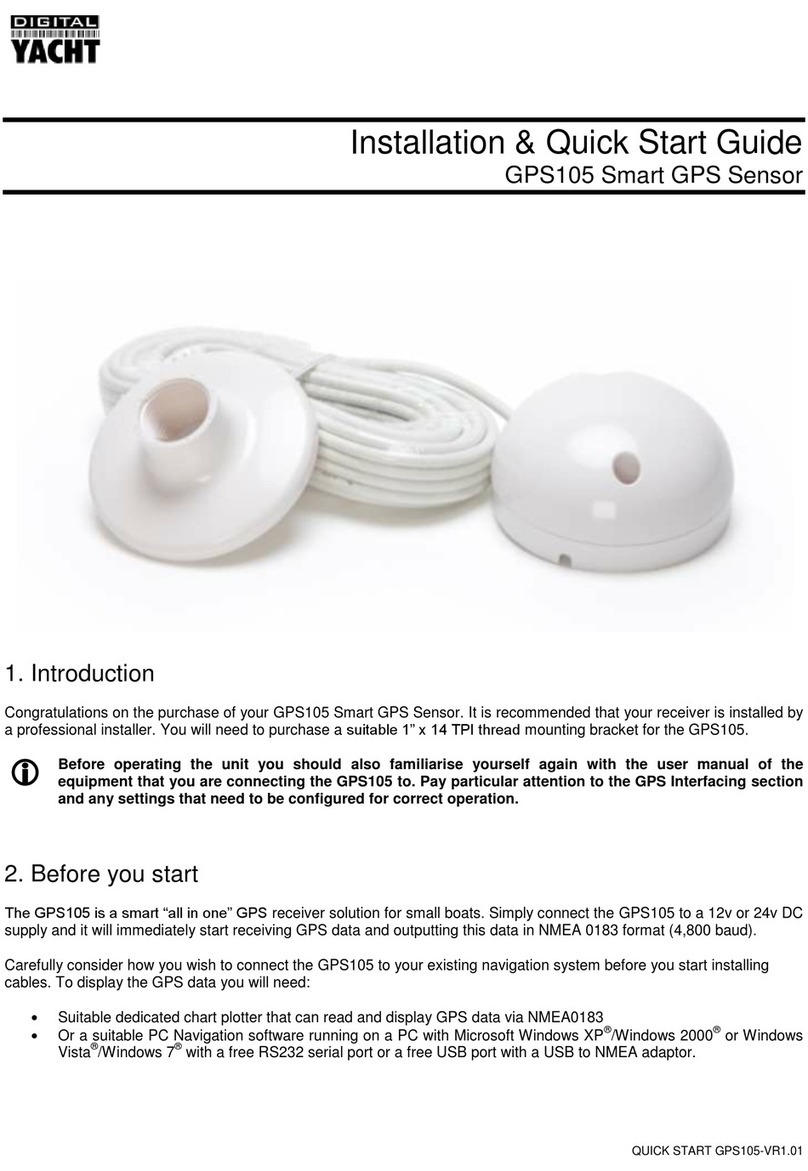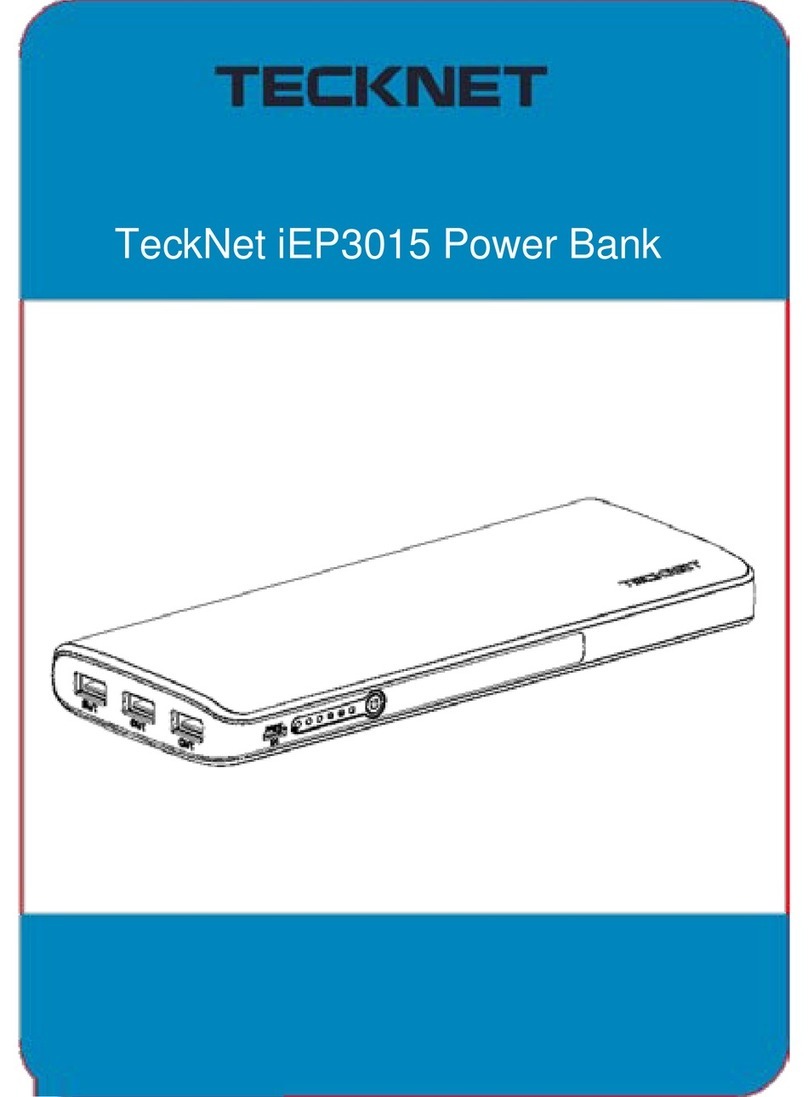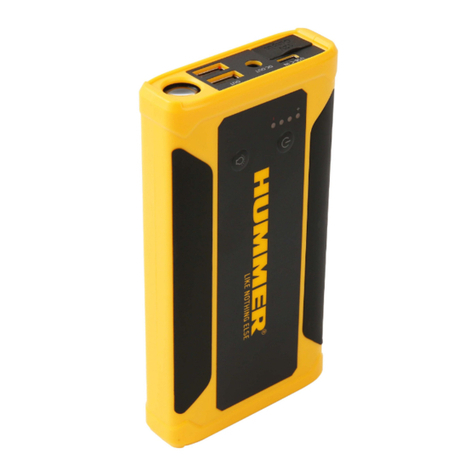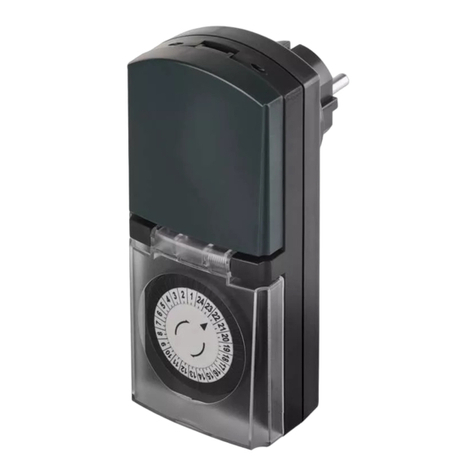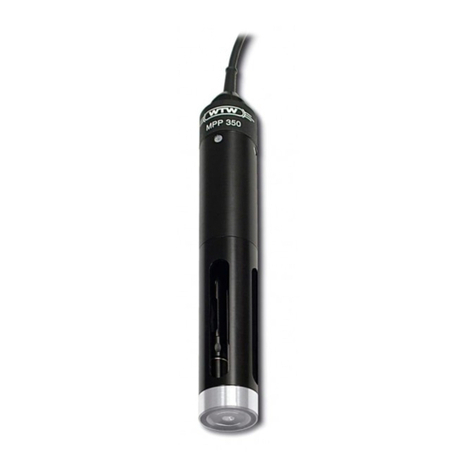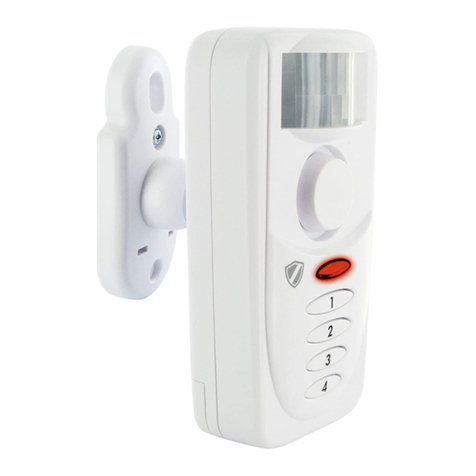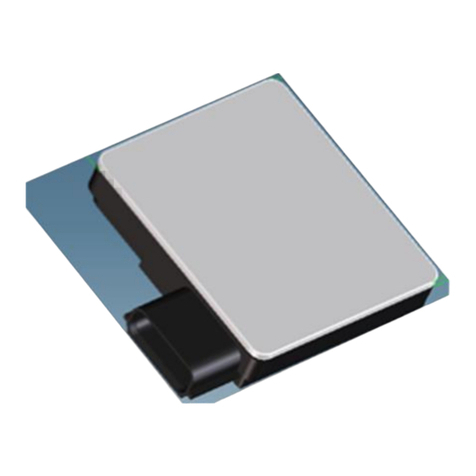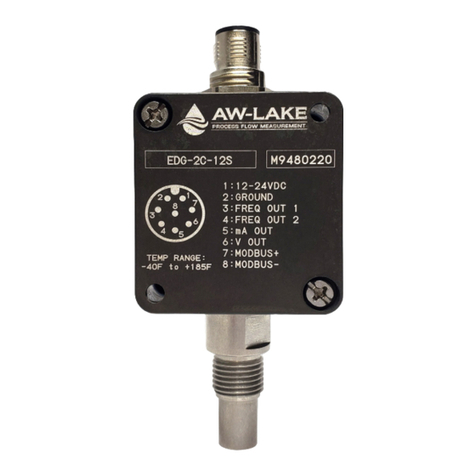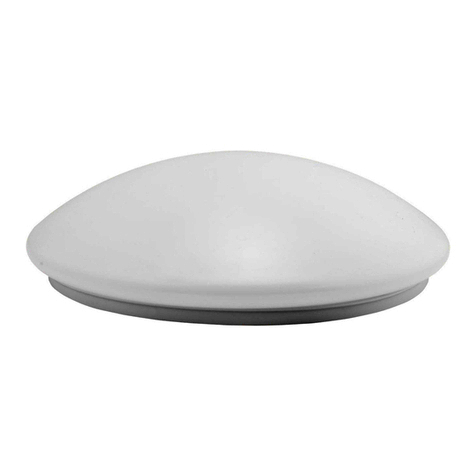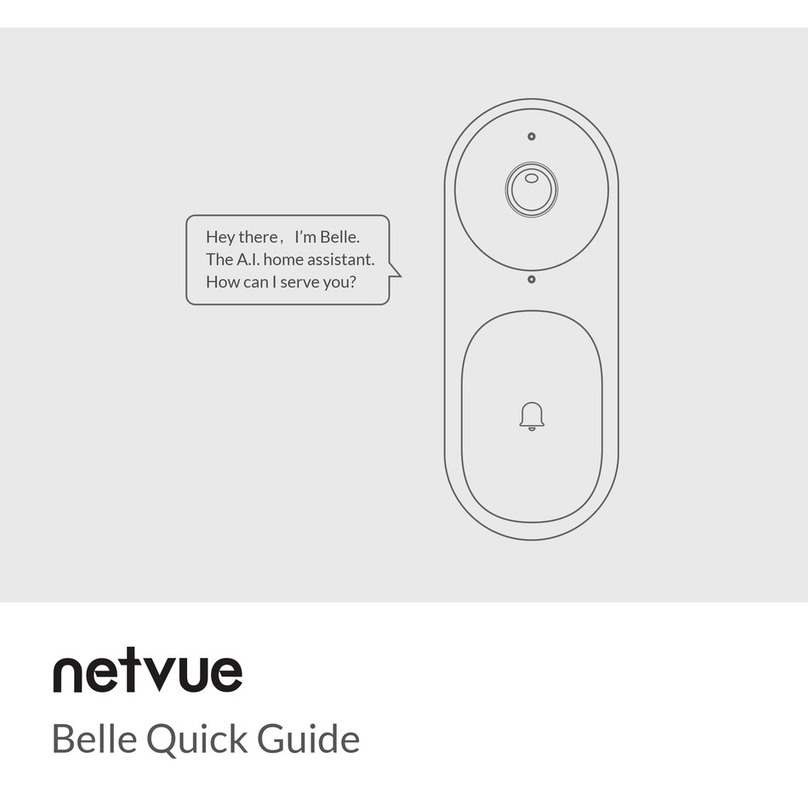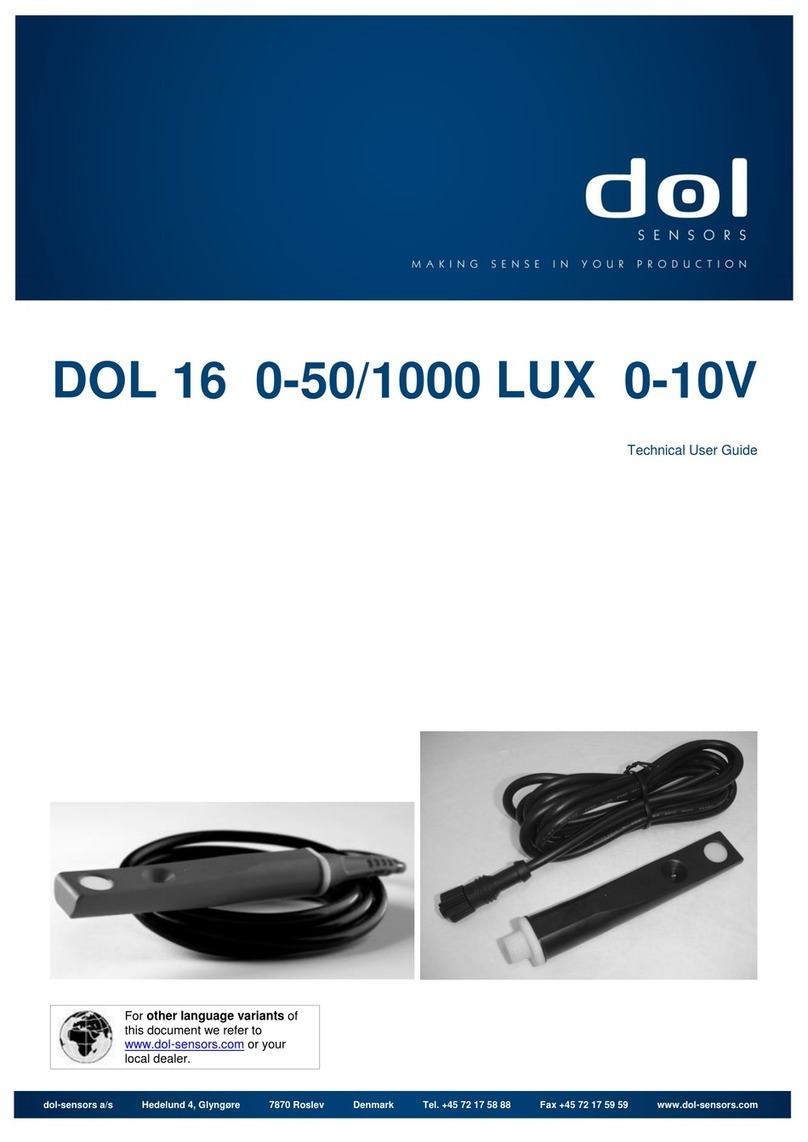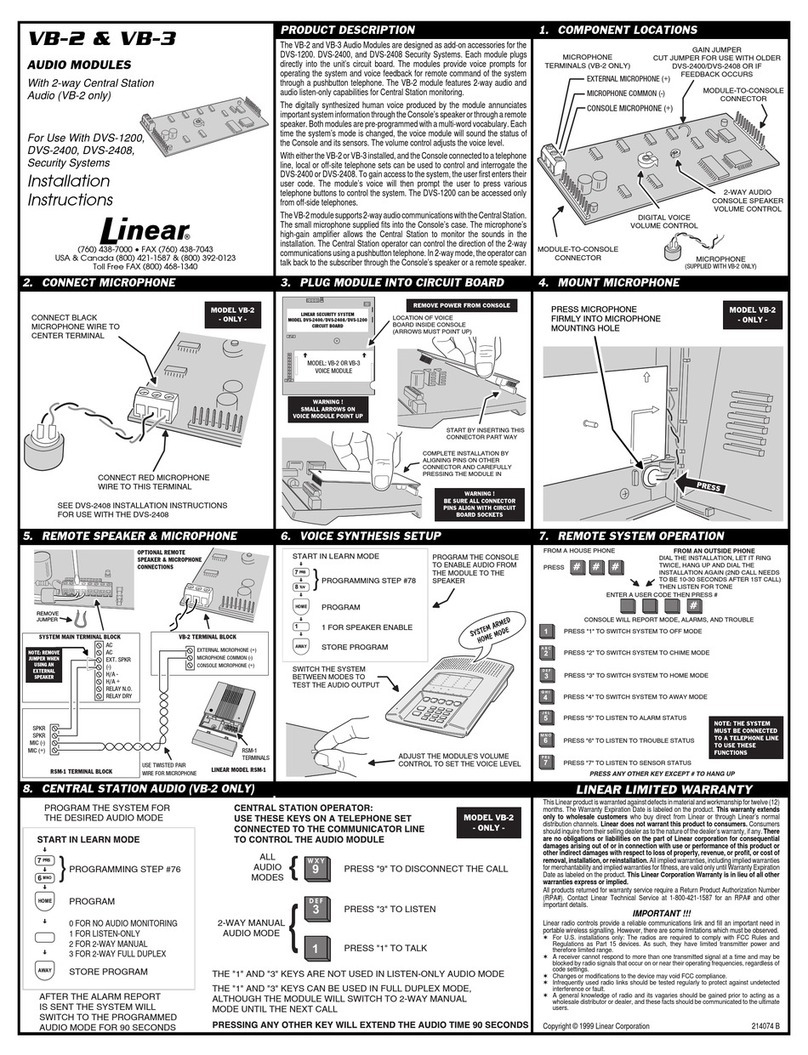DIGITAL YACHT GPS150 Quick guide


Quick Start Guide for GPS150 V1.02
TEL + 44 1179 554474 www.digitalyacht.co.uk sales@digitalyacht.co.uk
1. Introduction
Congratulations on the purchase of your GPS150 Smart GPS/GLONASS Sensor. It is recommended that your receiver is
installed by a professional installer. You will need to purchase a suitable 1” x 14 TPI thread mounting bracket for the
GPS150.
Knowing your position whilst at sea is key to safe navigation. What we now take for granted, was extremely difficult, time
consuming and inaccurate. Then, in the latter half of the 20th century, came the electronic positioning systems –Decca,
Loran, Transit and in the 1990s, the global positioning system, GPS. Over 20 years have passed since the first GPS
receivers were commercially available and in this time the whole world has come to rely on this US funded technology.
Now every boat, plane, car and train that we travel on has GPS navigation and even your smart phone can give a GPS
position accurate to within 10m, anywhere in the world, at the touch of a button.
Much political discussion has taken place over our reliance on GPS technology, to the point where both Europe (Galileo)
and China (Compass) are developing their own satellite based navigation systems, which are scheduled to be fully
operational by 2020. However, whilst GPS was being developed in the 1980s, there was another competitive system
developed in Russia called GLONASS. This system was very much over shadowed by the American GPS system and
due to the secrecy surrounding the technology and the difficulties for non-Russian companies to license this technology, it
never achieved wide spread commercial use outside of Russia and surrounding countries.
During Russia’s difficult financial period between 1989-1999, government spending on their space program was cut by
80% and launching of new GLONASS satellites stopped. With relatively short life spans the GLONASS satellites soon
started to fail and by 2001 there were only 6 satellites still operational and the GLONASS service effectively ceased.
Most observers at the time thought this would be the death of GLONASS but in 2000, with the Russian economy
recovering, President Vladimir Putin took a special interest in GLONASS and made the restoration of this service a high
priority. Between 2002-2011, a large investment was made and at the end of 2011 GLONASS was fully restored and now
offers worldwide coverage (with 24 operational satellites) and accuracy almost as good as GPS. In areas of high
Latitudes (North and South) GLONASS is more accurate than GPS due to the orbital position of the satellites.
Now with the GPS150 DualNav™ technology, boat owners can have a single sensor that will automatically read satellite
data from both GPS and GLONASS constellations, choosing the best signals from over 50 satellites. Wherever you are in
the world you now have twice the satellites to choose from resulting in the GPS150 receiver having much better
coverage, time to first fix and positional accuracy. Add to this the new high sensitivity receiver design, selectable baud
rate and 10Hz position update rate and you have a GPS receiver that is significantly better than every previous marine
GPS receiver on the market.
The new performance is particularly noticeable if the receiver is mounted below deck/inside the wheelhouse where the
high sensitivity receiver still gives a good position fix or when there are obstructions blocking the view of the sky, such as
a wet sail shadowing the antenna or when sailing in rivers or close to cliffs, plus DualNav™ technology with more
satellites to choose from, gives a much more accurate fix.
On larger boats, it is now possible to have two completely separate position sources, not just two GPS units but two
different positioning systems so that you can compare and validate your actual position. Set one GPS150 to GPS mode
and another GPS150 to GLONASS mode and you have dual redundancy and two independent positioning systems.
The GPS150 also supports SBAS (Satellite-Based Augmentation System) which is the generic name given to the
differential signal transmitted by various local geo-stationary satellites. SBAS allows the GPS150 receiver to remove
errors in the position due to environmental conditions and improves accuracy down to <1m. Using WAAS in the US and
EGNOS in Europe the GPS150 will automatically switch to differential SBAS mode when available.
The GPS150 will also be able to utilise, with a software update, the European funded Galileo positioning system when it
comes on line (IOC –Initial Operation Capability) in 2018.
Before operating the unit you should also familiarise yourself again with the user manual of the
equipment that you are connecting the GPS150 to. Pay particular attention to the GPS Interfacing section
and any settings that need to be configured for correct operation.

Quick Start Guide for GPS150 V1.02
TEL + 44 1179 554474 www.digitalyacht.co.uk sales@digitalyacht.co.uk
2. Before you start
The GPS150 is a smart “all in one” GPS/GLONASS receiver solution for small boats featuring our DualNav™ technology
that allows the unit to be set to use the GPS or GLONASS satellite constellations or a combination of the two systems.
Select the mode you want the GPS150 to operate in, connect it to a 12v or 24v DC supply and it will immediately start
calculating your position and outputting this data in NMEA 0183 format (4,800, 38,400 or 115,200 baud).
Carefully consider how you wish to connect the GPS150 to your existing navigation system before you start installing
cables. To display the GPS/GLONASS data you will need:
Suitable dedicated chart plotter that can read and display GPS/GLONASS data via NMEA0183
Or a suitable PC Navigation software running on a PC with Microsoft Windows XP®/Windows 2000®or Windows
Vista®/Windows 7®with a free RS232 serial port or a free USB port with a USB to NMEA adaptor.
3. Installation
Before starting installation select a suitable location for the GPS150 Receiver. The unit is water proof and designed for
on-deck mounting. The GPS150 antenna has the popular 1” x 14 TPI thread mount, found in many VHF antennas. A wide
variety of different brackets are available for this type of threaded mount, consult your local marine electronics dealer or
chandlery for more information.
The 1” x 14 TPI thread mount can also be removed by unscrewing the three hex bolts with a suitable Allen Key, allowing
the GPS150 to be flush mounted on a flat horizontal surface. In this situation, the antenna should be mounted on a layer
of silicone sealant to avoid standing water accumulating under the antenna.
Dimensions;
The GPS150 is supplied with 10m of cable and this should be routed through the vessel to a suitable dry internal location
where it can be connected to the boat’s DC power system and the equipment it will be interfaced with. The cable can be
shortened, lengthened or joined without problems.

Quick Start Guide for GPS150 V1.02
TEL + 44 1179 554474 www.digitalyacht.co.uk sales@digitalyacht.co.uk
The GPS150 should be connected to the boat’s DC supply via a 1 Amp fuse. The unit requires 9.6V to 28.8V supply
voltage.
The GPS150 has a number of operating modes that can be set by adjusting four DIP switches inside the unit. Section 4 of
this manual explains how to select the different modes. By default the GPS150 will output;
- GLL, GGA, RMC, VTG, GSA, GSV and ZDA once per second at 4800 baud (using GPS Satellites only)
This default mode is good for most applications and is exactly the same as our previous GPS105 unit, which the GPS150
replaces. Below are the wiring details for the GPS150 and a connection diagram that shows how to interface to other
navigational equipment.
Wiring Colours;
Red
Power + (12v or 24v)
Black
Power –(0v)
Yellow
NMEA Out +
Green
NMEA Out –
When connecting to a two wire NMEA
Input (such as Raymarine), connect
the GPS150 Yellow wire to the NMEA
+ Input and the Green wire to the
NMEA –Input.
When connecting to a single wire
NMEA Input (such as Garmin),
connect the GPS150 Yellow wire to
the NMEA + Input and the Green wire
to the Power –(0v).

Quick Start Guide for GPS150 V1.02
TEL + 44 1179 554474 www.digitalyacht.co.uk sales@digitalyacht.co.uk
The GPS150 can be connected to a computer via a USB to NMEA adaptor. If you use the Digital Yacht NMEA to USB
Adaptor, then the diagram below shows how to connect them together.
The GPS150 can also be used wirelessly to send GPS data to an iPad/iPhone or Android device by using one of Digital
Yacht’s WLN10 (4800 baud) or WLN10HS (38400 baud) Wireless NMEA Servers. The GPS150 should be connected to
the WLN10/WLN10HS as shown in the diagram below.

Quick Start Guide for GPS150 V1.02
TEL + 44 1179 554474 www.digitalyacht.co.uk sales@digitalyacht.co.uk
4. Mode Selection
The GPS150 can be operated in a number of different
modes, for example;
GPS at 4800 baud for legacy systems
GPS+GLONASS at 38400 baud for new plotters
“Turbo Mode” at 115K baud for PC race software
Selection of the operating mode is via four “DIP” switches
inside the unit. Changes to the switches will become
active when the GPS150 is power cycled (turned off/on).
There is a green LED on the PCB that indicates if the
GPS is working correctly and the baud rate selected. The
photo of the PCB shows the location of the LED and
switches.
Within 2-3 seconds of applying power to the GPS150, the LED should illuminate as follows;
LED State
Description
LED ON
Configured correctly for 4800 baud
LED Slow Flash
Configured correctly for 38400 baud
LED Quick Flash
Configured correctly for 115K baud (Turbo Mode)
LED Flashes once every 2 seconds
Unused Mode Selected (check DIP switches)
LED Flashes twice every 2 seconds
Power Up Sequence Failed*
* NOTE –In some situations, where the switching of the power to the GPS150 is not cleanly made or it is made to quickly
(not giving the internal voltages time to dissipate), the GPS150 Power Up Sequence may fail resulting in the selected
operating mode not being setup correctly. This situation is indicated by the LED flashing twice every 2 seconds. Should
this occur, simply turn off the GPS150 wait 10 seconds and then power it up again. If it continues to not power up
correctly then contact Digital Yacht for further advice,
To access the switch, it is necessary to open the GPS150. It is recommended that this operation is only carried out by an
approved Digital Yacht Dealer/Distributor, any physical damage to the PCB will not be covered by warranty.
Before opening the GPS150, turn off all DC power to the unit and then remove the threaded mount by unscrewing the
3xM3 hex bolts using a suitable Allen Key. Then using a Torx T6 screwdriver, remove the three screws that hold the GPS
enclosure together. Gently pull the enclosure apart being careful not to lose the O-Ring seals (1 large outer and 3 small
screw pillar O-Rings).
Once the GPS150 PCB is exposed, set the four switches to the relevant positions for the required operating mode as
shown in the table on the next page
.

Quick Start Guide for GPS150 V1.02
TEL + 44 1179 554474 www.digitalyacht.co.uk sales@digitalyacht.co.uk
Operating Modes
After changing the DIP switches, it is necessary to power cycle the GPS150 (turn off/on) before the new operating mode
becomes active. Check the LED to make sure that the expected baud rate is active.
Switches
1234
MODE SATELLITES BAUD RATE NMEA DATA
GPS 105 Mode (default) GPS 4800 1 HZ GGA/GLL/RMC/GSV/GSA/VTG/ZDA
GPS 6Hz Mode 4800 Baud GPS 4800 6 HZ RMC
GPS+GLONASS Minimum Sentences GPS+GLONASS 4800 1 HZ RMC/GSV/GSA
GPS+GLONASS All Sentences 1Hz GPS+GLONASS 38400 1 HZ GGA/GLL/RMC/GSV/GSA/VTG/ZDA
GPS+GLONASS All Sentences GPS+GLONASS 38400 6 HZ GGA/GLL/RMC/GSV*/GSA*/VTG/ZDA*
GPS+GLONASS Standard Sentences GPS+GLONASS 38400 10 HZ GGA/RMC/GSV*/GSA*
GLONASS 1Hz All Sentences GLONASS 4800 1 HZ GGA/GLL/RMC/GSV*/GSA*/VTG/ZDA*
GLONASS 6Hz Minimum Sentences GLONASS 4800 6 HZ RMC
Full "Turbo" Mode GPS+GLONASS 115000 10 HZ GGA/GLL/RMC/GSV*/GSA*/VTG/ZDA*
* These sentences output at 1HZ

Quick Start Guide for GPS150 V1.02
TEL + 44 1179 554474 www.digitalyacht.co.uk sales@digitalyacht.co.uk
5. Technical Specification
Receiver GNSS L1 C/A-code, SPS of GPS + Glonass, Galileo or Beidou
Sensitivity -165 dBm typical
Update Rate 1Hz by default (configurable up to 10Hz)
Accuracy Position <1m with SBAS and 3.0-5.0m without SBAS typically (67%)
Accuracy Velocity 0.02m/sec typically (50%)
Time ± 1us
Differential GPS SBAS (WAAS, EGNOS, MSAS, GAGAN and QZSS)
Time to First Fix 23sec (typical)
Technology Supported GPS and GLONASS (Galileo and Beidou with firmware update)
Maximum Altitude 18,000m
Maximum Velocity 1000 knots
Operating Temperature -40°C to +85°C degrees Celsius
Maximum Current 30mA (@12Volts)
Dimensions 75mm diameter, 82.5mm high (with mount), 32mm high (no mount)
Weight 300g
Protocols NMEA-0183 Version 3.01
NMEA messages GGA, GLL, RMC, VTG, GSA, GSV, ZDA
Power Input VDC +9v to 34v
Cable White 10m Shielded Cable (4.5mm OD)
Table of contents
Other DIGITAL YACHT Accessories manuals
Popular Accessories manuals by other brands
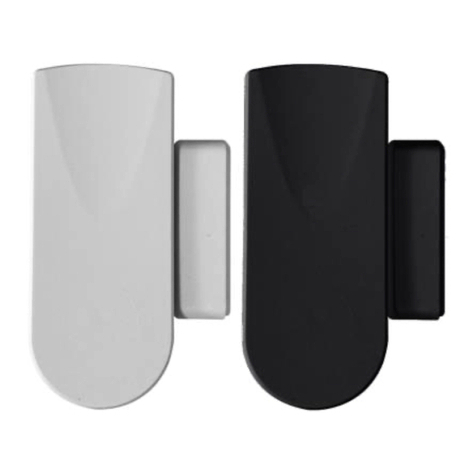
Clare Controls
Clare Controls ClareOne Installation sheet
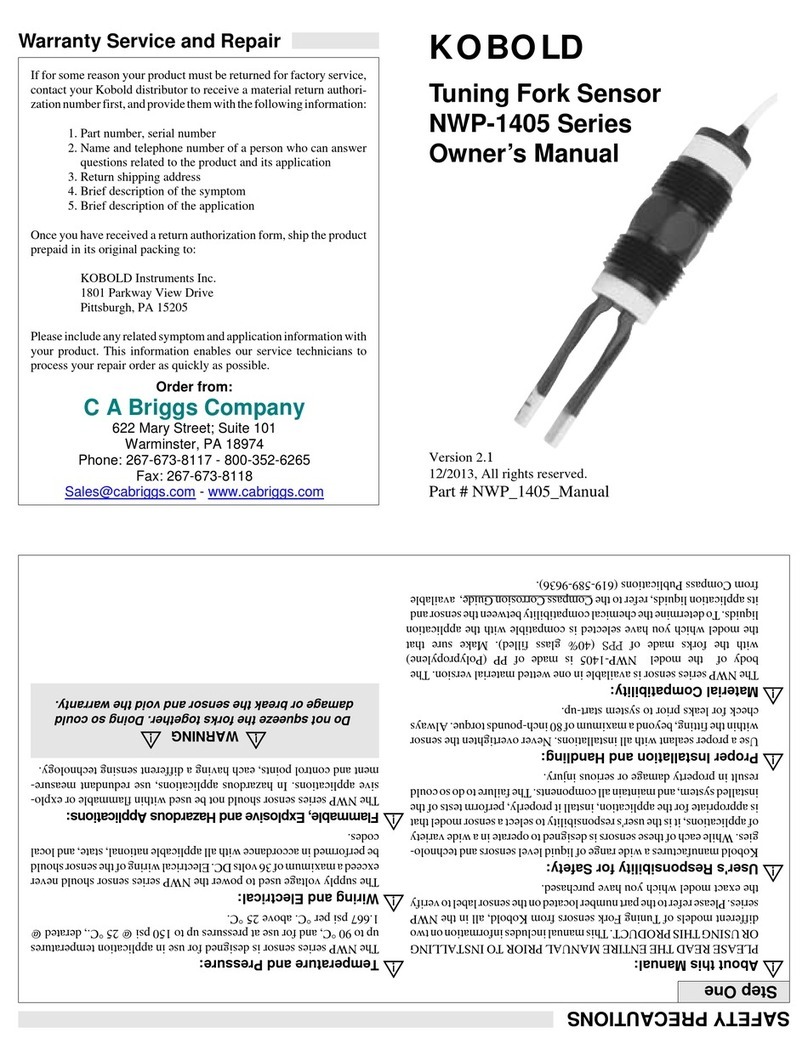
Kobold
Kobold NWP-1405 Series owner's manual
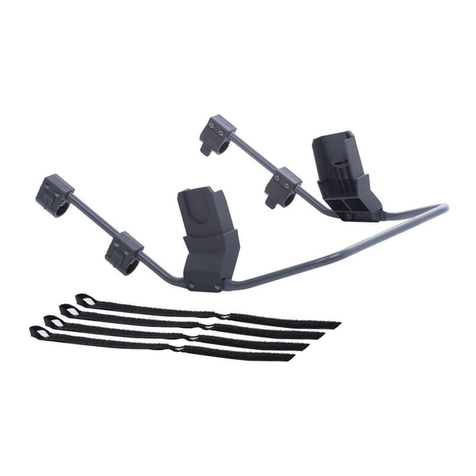
Joovy
Joovy Zoom 360 Ultralight quick start guide
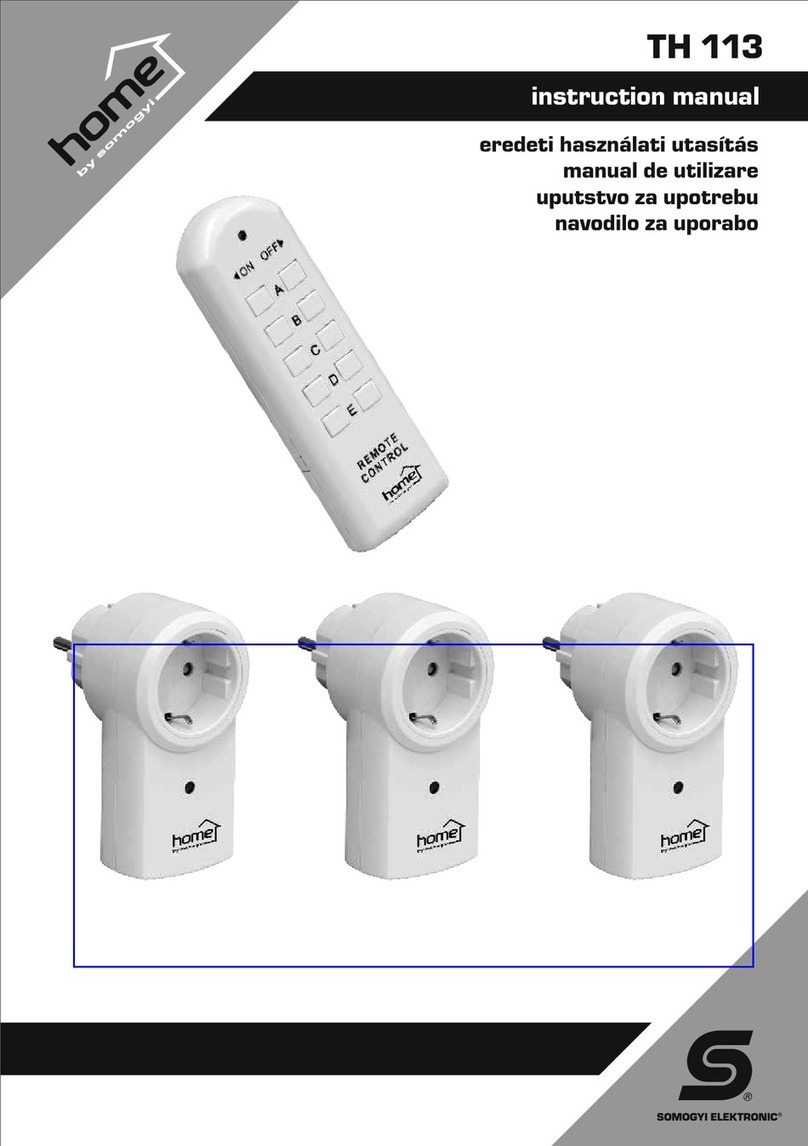
Somogyi
Somogyi home TH 113 instruction manual
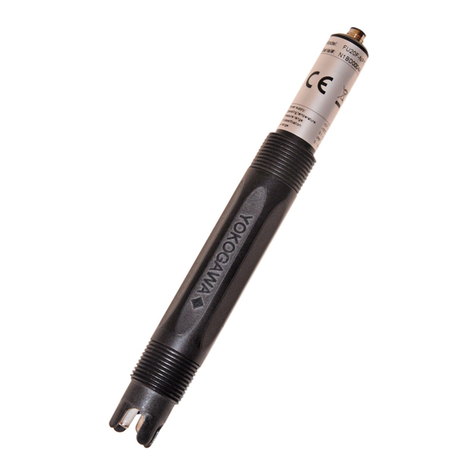
YOKOGAWA
YOKOGAWA FU20F instruction manual
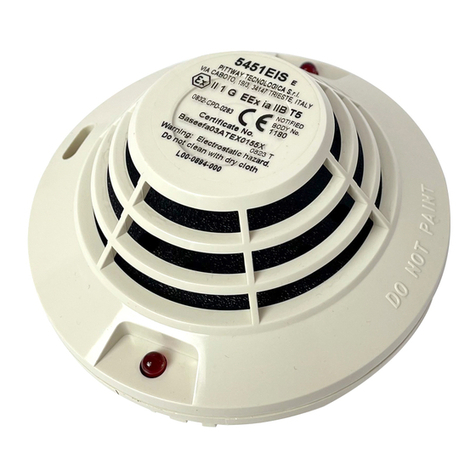
System Sensor
System Sensor 5451EIS Installation and maintenance instructions
